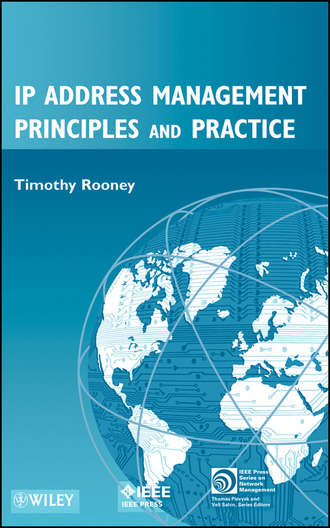
Полная версия
IP Address Management Principles and Practice
This book will be the first covering the subject of IP address management (IPAM). The practice of IPAM includes the application of network management disciplines to IP address space and associated network services, namely DHCP (Dynamic Host Configuration Protocol) and DNS (Domain Name System). The consequence of inaccurately configuring DHCP is that end users may not be able to obtain IP addresses to access the network. Without proper DNS configuration, usability of the network will greatly suffer as the name-to-address lookup process may fail. Imagine having to navigate to a website or send an email or an instant message by IP address instead of by name! It's equally important that these DHCP and DNS configurations be based on a common IP address plan, which maps out the IP address hierarchy, subnets, address pools, and domains. IPAM applies management disciplines to these core services, including configuration, change control, auditing, reporting and so on, and they are necessary given the absolute requirement for properly managing IP space and DHCP and DNS servers. The linkages among an IP address plan, DHCP server configuration and DNS server configuration are inseparable; a change of an IP address will affect DNS information and perhaps DHCP as well. These functions provide the foundation for today's converged services IP networks, so they need to be managed using a rigorous approach. Today, there is no single book that covers the management of these linkages and services they provide; IP Address Management Principles and Practice will fill that gap. While several books are available for leading vendors' DHCP and DNS services implementations, few exist for IP address planning, and none exist that unifies these three topics. To obtain a free copy of the IPAM Configuration Guide please send an email to: ieeeproposals@wiley.com


